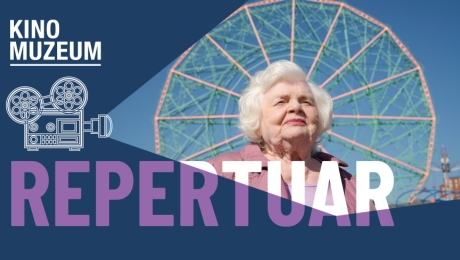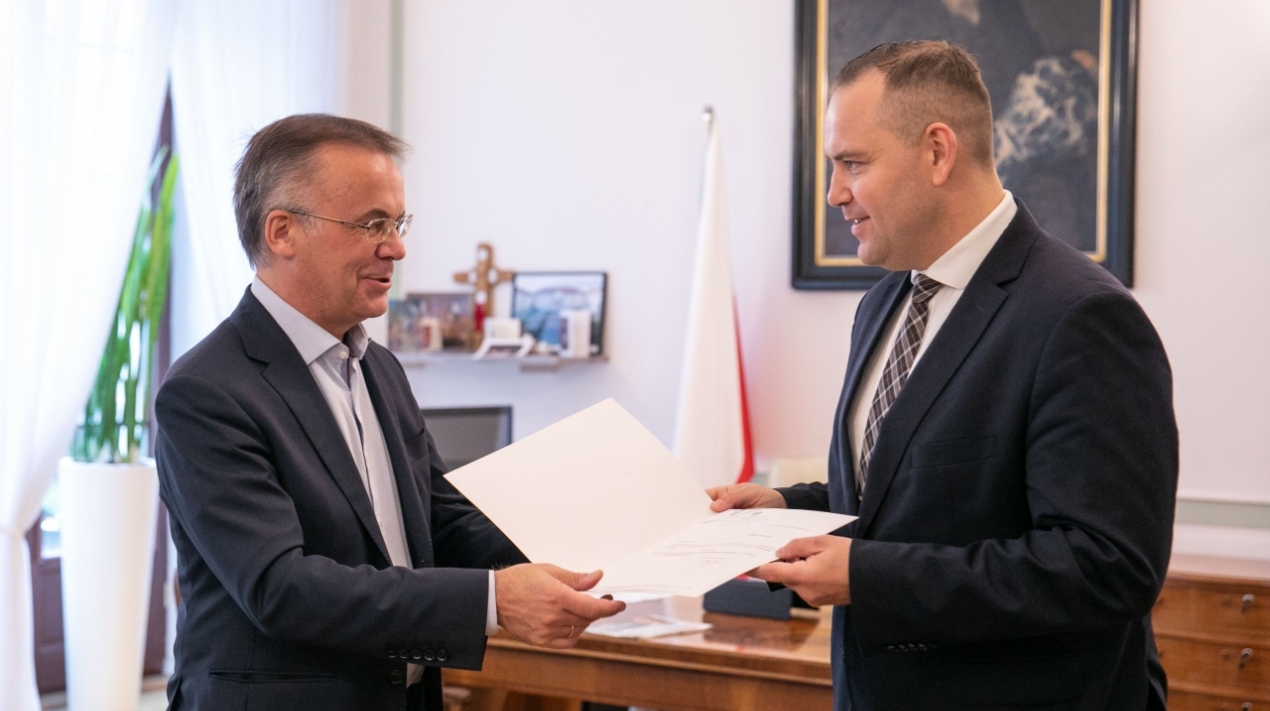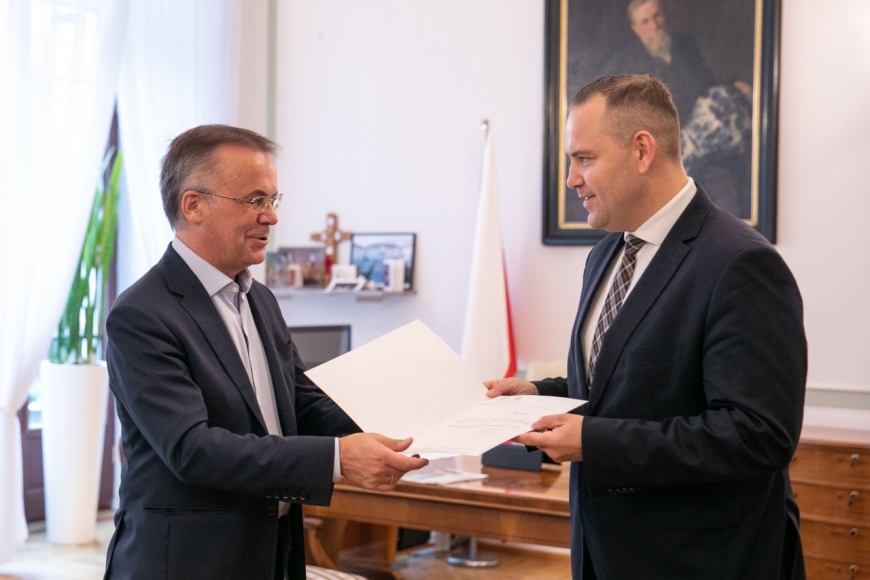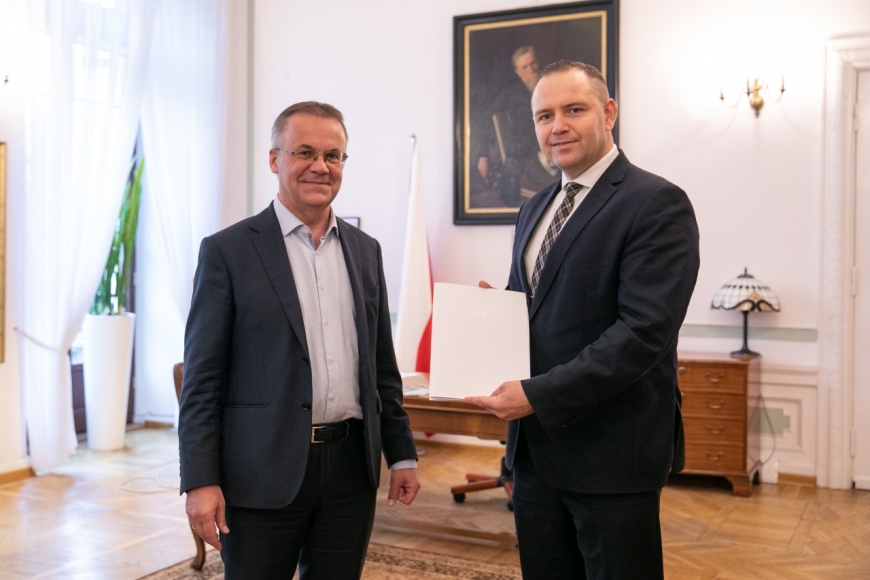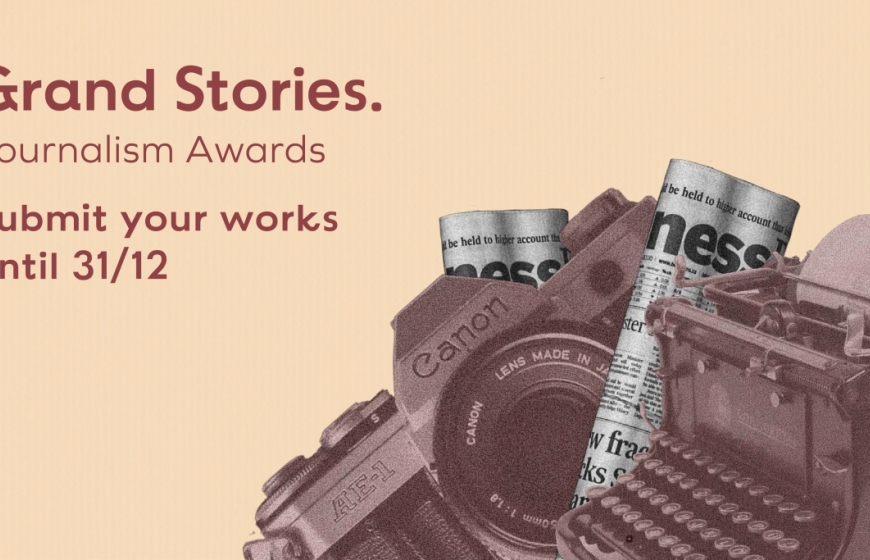Karol Nawrocki, PhD, reappointed as director of the Museum of the Second World War in Gdańsk
On 2 October 2020, the Undersecretary of Culture and National Heritage Jarosław Sellin appointed
Dr. Karol Nawrocki as the director of the Museum of the Second World War in Gdańsk for another term of office (2020-2027).
During Dr. Karol Narocki’s over three-year term of office as the director of the Museum of the Second World War in Gdańsk, the institution became one of the most popular narrative museums not only in Gdańsk Pomerania, but in all of Poland. This is evidenced by statistics: since its opening, the Museum has been visited by over 1.77 million people, with foreigners accounting for ca. 20% of this number. Today, the activities and narrative of this cultural institution revolve around international events and contacts, including the complex issues of WW2, while at the same time concentrating on the institution’s main objective -- to tell of the Polish experience of the 1939-1945 period in the context of international events.
Over the last three years, the Museum has launched 19 temporary exhibitions, which were presented both in the Museum itself (“Fighting and Suffering: Polish citizens during World War II”, “Westerplatte in Seven Acts”, “Armoured Wings”, “Heritage Lost”, to name a few), as well as in Poland and worldwide (such as “A Million Overseas” displayed in New York and Doylestown, USA). Thanks to the active cooperation with international institutions, 18 external exhibitions have also been displayed in the Museum during this time (including “Taking root: Western and Northern Territories. The Beginning” - The Western and Northern Territories Network; “Treblinka in the Eyes of Samuel Willenberg” - the Institute of National Remembrance). In cooperation with Ministry of Foreign Affairs in 2019 the Museum carried out an international exhibition project entitled “Fighting and Suffering”, presented in over 150 locations on six continents, thus becoming the largest information initiative of this kind in the history of Polish diplomacy. During Karol Nawrocki’s term of office, the Museum published 26 publications, including scholarly publications, exhibition catalogues and post-conference publications. Moreover, the Museum organised 11 academic and popular science conferences, including the World Battlefield Museums Forum (2018), bringing together the managers of major battlefields from all over the world. Within the said period of time, the Museum established relations with over 50 foreign museums, archives, universities and institutions, whose mission consists in remembrance and educational activities as well as building historical awareness. The Museum also initiated cooperation with numerous Polish organisations all over the world. What is more, the Museum has also hosted representatives of foreign diplomatic missions from over 30 states. It also established cooperation with numerous Polish diplomatic posts, whose representatives visited the Museum over 60 times. During these three years, the Museum has held 67 events promoting history, including numerous lectures, film screenings, discussions and author meetings, among other events.
Over 1,300 educational lessons for over 30,000 people have been held in the Museum since April 2017. Besides the academic, educational and exhibition activities, the Museum has carried out 40 cultural events, including concerts, plays, poetic evenings and musical performances. During the term of office of Dr. Karol Nawrocki, the Cinema Museum was opened. It has shown 164 films during over 930 screenings, including nearly 50 special screenings. Since April 2017, the Museum has carried out 225 film projects with witnesses to history, the “Spoken History” portal has been launched, more than 260 short format films have been prepared (including numerous editorials, lectures, short forms devoted to history, trailers, spots, reportages, coverages of events, etc.) and 75 radio programmes, as well as full-length documentaries. Between 2017 and 2020, the Museum expanded its collections by 12,249 exhibits, including 9,683 artefacts provided by donors. During the last three years, the Library has collected 11,485 inventory units of publications, accounting for over 40% of the Museum’s entire book collection. The Library was opened to the public in January 2018 and has since been visited by visitors nearly 2,500 times. A conservation workshop was opened in 2018, leading to over 4,400 objects being restored.
During the archeological research carried out between 2017 and 2020 on the Westerplatte battlefield, 37,914 movable artefacts were obtained contextually related to the history of Westerplatte, including the period of operation of the Military Transit Depot. Nine human skeletons (of the defenders of Westerplatte from September 1939) were found during the fifth stage of the archeological research. Thanks to the cooperation between the Museum of the Second World War, the Pomeranian Medical University in Szczecin and the Department Commission for the Prosecution of Crimes against the Polish Nation, the remains of five soldiers were identified and their identification notes were handed in to their families by the President of Poland, Andrzej Duda, on 1 September 2020 at Westerplatte.
During the term of office of Karol Nawrocki, the Museum of the Second World War was the main coordinator of the official commemoration events of the 80. Anniversary of the Outbreak of WW2, carrying out projects of varied nature - from strictly scientific, through educational, cultural and even sports events, as well as film productions, commemorations, and projects using the latest multimedia technologies. Major projects included the international scientific conference “The Pact for War: Hitler–Stalin Collusion of 23 August 1939 from the Perspective of 80 Years since the Outbreak of the Second World War” (23-24.08.2019), the cornerstone-laying ceremony for construction of the Museum of Westerplatte and the War of 1939 (1.09.2019), the unveiling of the monument of Cavalry Captain Witold Pilecki (17.09.2019), the multimedia show “Poland: First to Fight” (23-25.08.2019), musical performance “This Is How the War Began” (1.09.2019) and the “Museum on Water” project (July-September 2019). The effects of the successful coordination of the Anniversary events as well as well-planned promotional activities were highly effective with information about the Museum events reaching over 34.5 million recipients in Poland and worldwide. A state-of-the-art VR zone was opened in the Museum in 2019; it has been visited by 9,723 people. Over the last three years, the website of the Museum of the Second World War in Gdańsk was viewed by the total of over 3.5 million users, while the Museum’s fanpage on Facebook was liked by 68,287 fans. The Museum also gained many followers on Instagram (6,032 followers) and Twitter (Polish account - 5,615 followers, English account - 1,011 followers). During the lockdown (March-May 2020), the Museum moved its activities to the Internet, reaching one of the best results in Poland (4,700 new users, over 16 million views of posts according to Sotrender data).
The activities carried out between 2017 and 2020 were made possible thanks to the support of the Ministry of Culture and National Heritage, as well as thanks to the Museum’s commercial successes, such as the opening of museum restaurant in 2018, apartments, shop, cinema, modern technologies zone and other business activities.
During Dr. Karol Nawrocki’s three-year term of office, the Museum’s activities were appreciated by numerous groups of experts from various sectors. As a result, the institution was awarded with many prizes and distinctions, including:
-
The Drum Experience Awards 2019 for the external multimedia display “Poland: First to Fight” (2019);
-
The musical performance “This Is How the War Began”, a co-production of the Museum of the Second World War in Gdańsk, TOProduction and TVP S.A., was one of the finalists of the 10th edition of the Global Eventex Awards (a prestigious contest in the events sector) selected from amongst 444 entries from 39 countries;
-
The Museum received the 2019 Polish Tourism Organisation Certificate for the Best Tourism Product;
-
The temporary exhibition “Fighting and Suffering: Polish Citizens During World War II” and the international exhibition project of the same name reached the final of the 13th edition of the Historical Event of the Year in the “Exhibition” category;
-
The Museum’s digital 3D VR content technology for digitally recreated scenes and locations (wbmf.online) were amongst the 2020 top 10 projects in the world in the cultural and historical heritage category of the Sketchfab platform;
-
The project of the Museum of the Second World War in Gdańsk “Coordination of the commemoration of the 80th Anniversary of the Outbreak of World War II” was amongst the projects awarded or distinguished in the 40th Sybilla - Competition for the Museum Event of the Year 2019, whose winners were announced on 19 October 2020.
During the next, 7-year term of office (2020-2027), the main aim of the Museum of the Second World War, headed by Karol Nawrocki, PhD, consists in carrying out a long-term development plan on Westerplatte, whose first effects, namely the military cemetery of the Polish Army Soldiers at Westerplatte and the exhibition in the “Power Plant” building, will have been carried out by 1 September 2022. Meanwhile, the final development should, according to plan, be completely finished in 2026. The establishment of the new institution will involve all Departments of the Museum whose activities are focused on the issues of Westerplatte and the defensive war of 1939. Moreover, a strategic priority for the Museum in the years to come consists in the development of the Department of Archeology, which would make it possible to start a new archeological project: interdisciplinary research of battlefields, the search for hitherto unknown burial places of Polish soldiers killed during the defensive war of 1939, as well as the search for the burial places of Polish soldiers killed in the Far East. The exhibition plans for the years to come include the establishment of new thematic paths for visitors to the main exhibition, work on new language versions of the audio guide, as well as new temporary exhibitions, both in the interior of the building as well as in the open outside space. It will be necessary to intensify research and gain full contents for the main exhibitions in the Museum of Westerplatte and the War of 1939, which is under construction. One of the important new tasks envisaged for the next term of office consists in the appointment of the Museum’s Youths Council, which will advise the Museum in its contacts with the young generation. The Museum also plans to open new branches: in Tczew (the Museum of the Tczew Bridges) and Sochaczew (Museum of the Sochaczew Region and the Bzura Battlefield). Other challenges will consist in, inter alia, plans concerning the systematization of activities of the Museum of the Second World War for the years to come, including finishing the implementation of IT standards for project management (MS Project), the implementation of electronic management of documents, execution of a successful conversion of the Museum’s functioning in conditions without warranty, and the necessary further development of the artefact restoration workshop.









